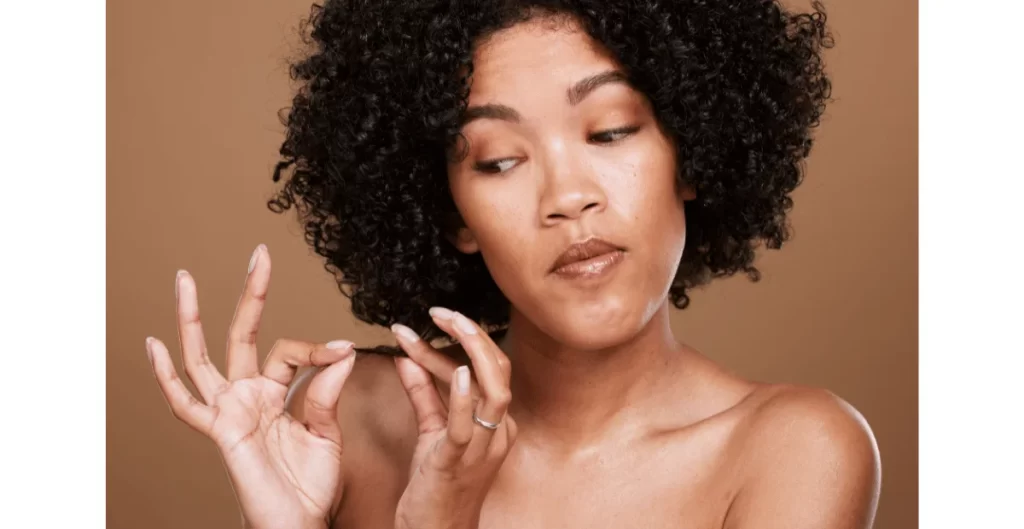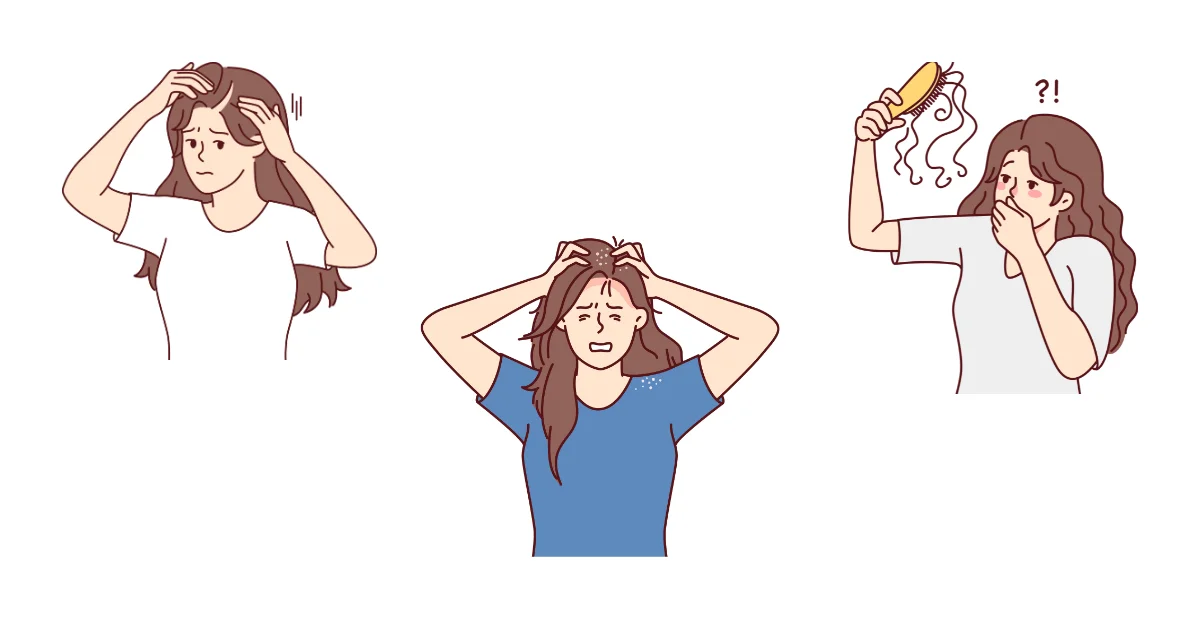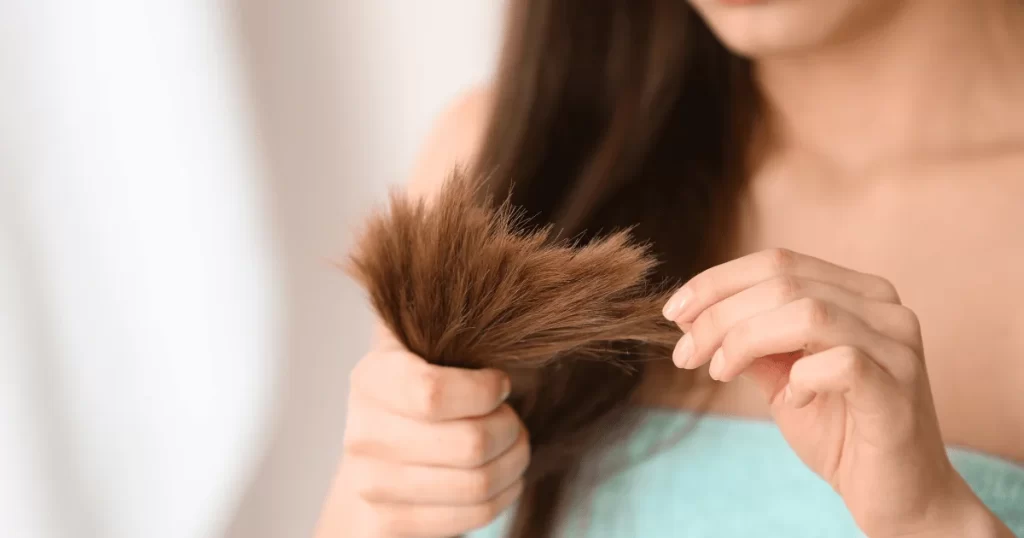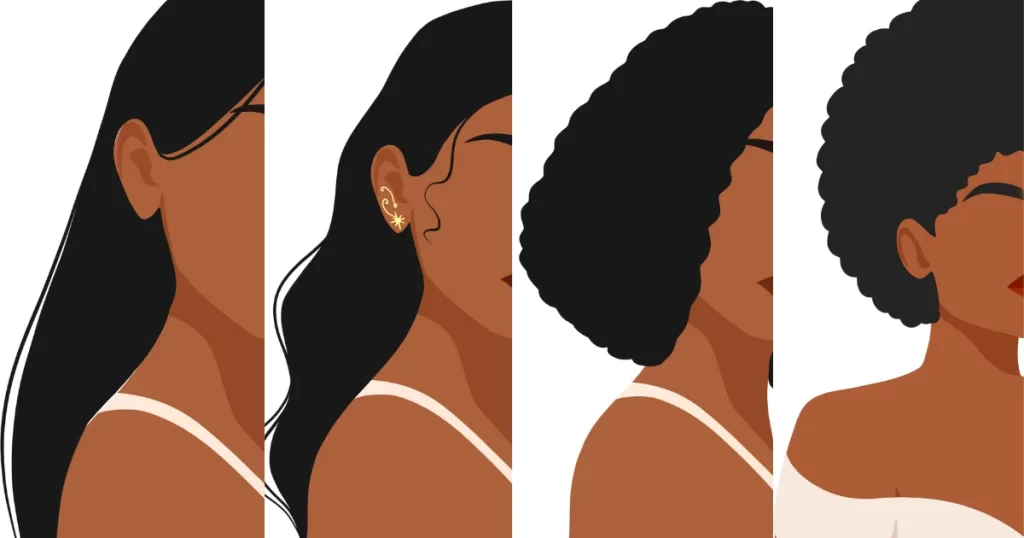Hey there, today we’re going to delve into a hair care topic crucial for all of us to understand: hair porosity. I understand that the term might seem intimidating, but don’t worry! I’m here to explain it in a way that’s easy to grasp.
What is Hair Porosity?

Hair porosity is the secret sauce to maintaining healthy locks. Porosity refers to the hair’s ability to absorb and retain moisture and hair care products. In simpler terms, it’s like your hair’s “personality” that influences how it behaves and responds to your styling efforts. This aspect is vital for choosing the right products and establishing a hair care routine to keep it healthy and well-moisturized.
Why Hair Porosity Matters
Understanding your hair porosity is akin to discovering the key to a treasure chest. It unlocks the secrets to healthy, beautiful hair. Hair porosity matters because it helps you comprehend how your hair reacts to moisture and what works best for your hair.
Knowing your hair porosity level can assist you in selecting the right hair care products, creating an effective hair care regimen, and preventing hair damage, whether you have low, medium, or high porosity.
Hair porosity is typically divided into three main categories:
- Low porosity hair has tightly bound cuticles, making it hard for moisture to penetrate.
- Medium porosity hair has cuticles that are less tightly bound, allowing some moisture in.
- High porosity hair retains a lot of moisture, making it feel sticky, as though water will take a long time to leave the hair.
This article will delve into the factors that influence your hair’s porosity, guide you in identifying your hair porosity level, and provide tips on how to care for your hair based on its porosity type.
Porosity Facts
Porosity is determined by the cuticle, the outer layer of hair consisting of thin, overlapping cells.
Low porosity hair has tightly bound cuticle cells, resisting moisture absorption, while high porosity hair features separated cuticle cells, readily soaking up moisture.
Understanding your hair’s porosity type is essential for an effective hair regimen. To maintain healthy hair, water, oils, and moisturizing products must penetrate the cuticle to reach the cortex. Closed cuticles hinder water and oil passage, while widely spaced cuticles make moisture retention challenging.
What is the Cause?
Hair porosity is mostly determined by genetics; for example, if low-porosity hair runs in your family, you’re most likely to have it too. However, it’s worth noting that hair treatments like blow-drying, bleaching, straightening, overwashing, and harsh products can raise and open the cuticles, making it hard for hair to retain moisture. Excessive UV exposure can also increase porosity, so protect your hair from the sun.
Characteristics of Porosity Level
Low-porosity hair
This is often characterized by a rough and almost dry texture and struggles to retain moisture. If you find it challenging to get your hair wet, it might be its low porosity. This is because the cuticles are tightly packed, making them resistant to moisture.
Medium porosity hair
This retains a moderate amount of moisture, leaving it feeling damp but not sticky. This is the Goldilocks zone. Hair with medium porosity has cuticles that allow just the right amount of moisture in and out. It’s not too thirsty, and it’s not too picky.
High porosity hair
Has widely spaced cuticles, allowing moisture in easily but leading to quick moisture loss. The hair is like a sponge. It soaks up water like there’s no tomorrow but also loses it quickly. The cuticles are often raised and damaged, which can lead to frizz and breakage.
How to Determine Your Hair Porosity

Now that you have a basic idea of what hair porosity is, let’s figure out your hair’s type. You can do this right at home; no fancy equipment is needed!
The Float Test
Fill a glass with water and pluck a strand of clean hair. Drop it into the water and watch what happens:
- Low Porosity: If your hair floats on the surface, you likely have low porosity hair. It’s not eager to soak up that water.
- Medium Porosity: Hair that hovers somewhere in the middle will hang out in the middle of the glass. No sinking, no floating.
- High Porosity: If your hair sinks like a stone, high porosity might be your deal. It’s chugging water like it’s at a hydration party.
The Slip ‘n’ Slide Test
Slide your fingers up a strand of your hair, from the tip toward the root.
- Low Porosity: If it feels smooth and you don’t feel any bumps or ridges, your hair is likely to have low porosity.
- Medium Porosity: If you feel a slight bump or a few tiny bumps as you slide your fingers up, you probably have medium porosity hair.
- High Porosity: If your fingers catch on the way up like it’s a rough ride, high porosity might be the answer.
How to Improve Hair Porosity
Your porosity type will affect the way you care for your hair. Let’s break it down:
Low Porosity Hair
This is like that shy friend who doesn’t open up easily. The cuticles are tight, making it difficult for moisture to get in. Here are some tips:
- Use heat: Warm water and heat-activated products can help open those cuticles a bit, making it easier for moisture to penetrate.
- Lightweight products: Go for lightweight, water-based products that won’t sit on your hair’s surface.
- Clarify occasionally: Low porosity hair can be prone to build-up, so use a clarifying shampoo now and then to remove it.
Medium Porosity Hair
This is the sweet spot, where your hair is pretty chill about moisture. But maintaining this balance is key.
- Balanced products: You can use a wide range of products without too much trouble. Your hair doesn’t need much coaxing to accept moisture, but it won’t let go of it too easily.
- Maintain with care: Continue your regular hair care routine and your medium porosity hair should stay happy.
- Protect your balance: Avoid overdoing any specific treatment, as it could tip the balance towards high or low porosity.
High Porosity Hair
High porosity hair is like a sponge, eager to soak up moisture, but also quick to lose it. Here’s what you need to do.
- Seal the moisture: Use heavier products like oils and butter to lock in that precious moisture.
- Avoid heat styling: High-porosity hair is prone to damage, so it’s best to limit the use of heat styling tools.
- Protein treatments: Regular protein treatments can help strengthen the hair and reduce frizz.
Hair Care Based on Porosity
Your hair care routine should be tailored to your porosity type. Here’s a breakdown:
Cleansing
- Low Porosity: Use warm water and sulfate-free shampoos. The warmth will help open those cuticles.
- Medium Porosity: Stick to a regular sulphate-free shampoo.
- High Porosity: Consider co-washing (using conditioner to cleanse) or using mild shampoos.
Conditioning
- Low Porosity: Light, leave-in conditioners are your best friends.
- Medium Porosity: Standard conditioners work well.
- High Porosity**: Deep conditioning treatments with protein can help.
Styling
- Low Porosity: Lightweight, water-based products are ideal.
- Medium Porosity: You have more flexibility; choose products based on your hair’s needs.
- High Porosity: Heavier, sealing products like oils and butter are great.
Remember, the key is to listen to your hair. It will tell you what it likes and what it doesn’t.
Building a Hair Care Regimen
Creating a hair care regimen that suits your hair porosity is crucial, and consistency is key. It’s all about trial and error, and the more you take care of your hair, the better you’ll understand what works best for it. Consistently following a suitable hair care routine can help keep your hair healthy, hydrated, and looking its best.
The Role of Diet and Lifestyle
Your hair is a reflection of your overall health. Diet and lifestyle choices play a significant role in hair health.
- Balanced diet: Include protein, vitamins, and minerals. My personal favourite is a good old avocado for those healthy fats.
- Stay hydrated: Water is your hair’s best friend. Proper hydration keeps your hair looking shiny and feeling great.
- Stress management: Stress can wreak havoc on your hair. Practice relaxation techniques like yoga or meditation.
- Regular exercise: Exercise boosts blood flow, which helps in the delivery of nutrients to your hair.
- Sleep well: A good night’s sleep is when your body does most of its repair work, including hair repair.
I can’t stress this enough; what you put into your body shows on your hair. I’ve seen a tremendous improvement in my hair’s health after making these lifestyle changes.
Addressing Specific Hair Concerns

Hair porosity also plays a role in addressing specific concerns like frizz, breakage, and damage.
- Frizz: For high-porosity hair, sealing in moisture with oils and butter can help combat frizz. For low-porosity hair, use lightweight products.
- Breakage: High porosity hair is prone to breakage, so regular protein treatments can help strengthen it.
- Damage: If your hair is already damaged, consider a trim to get rid of the worst bits. Follow up with a healing routine based on your porosity type.
Seasonal Adjustments
Your hair’s needs can change with the seasons, so don’t forget to adjust your routine accordingly.
- Summer: Protect your hair from UV rays and use products with SPF. Lighter, hydrating products are great.
- Fall: As the air gets drier, consider using heavier moisturizing products and protective styles.
- Winter: Keep your hair hydrated and protected from harsh cold and wind. Deep conditioning treatments can be a lifesaver.
- Spring: Lighten up on products and focus on cleansing to remove buildup from the winter months.
- Adapting your hair care to the seasons is a must. I’ve had my fair share of winter frizz, but with the right routine, it’s much easier to manage.
Here are a few insider tips:
- Consistency is key: A routine is more effective than occasional intensive treatments.
- Be patient: Hair care takes time, so don’t expect overnight miracles.
- Stay informed: Keep learning about your hair type and the products that work best for you.
- Listen to your hair: Your hair often tells you what it needs. Dryness, breakage, and frizz are all signs you should pay attention to.
- Professional advice: Don’t hesitate to seek advice from a hairstylist or cosmetologist, especially if you’re dealing with specific hair issues.
Embracing Your Unique Hair
Remember, your hair is a significant part of what makes you unique and beautiful. Embrace it, along with all of your other features, and be proud of your journey.
As the quote goes, “Embrace your hair, your features, and your journey. You’re one of a kind, and that’s your superpower.”
So, whether you have low, medium, or high porosity hair, remember that it’s a beautiful and essential part of who you are. Celebrate it!



